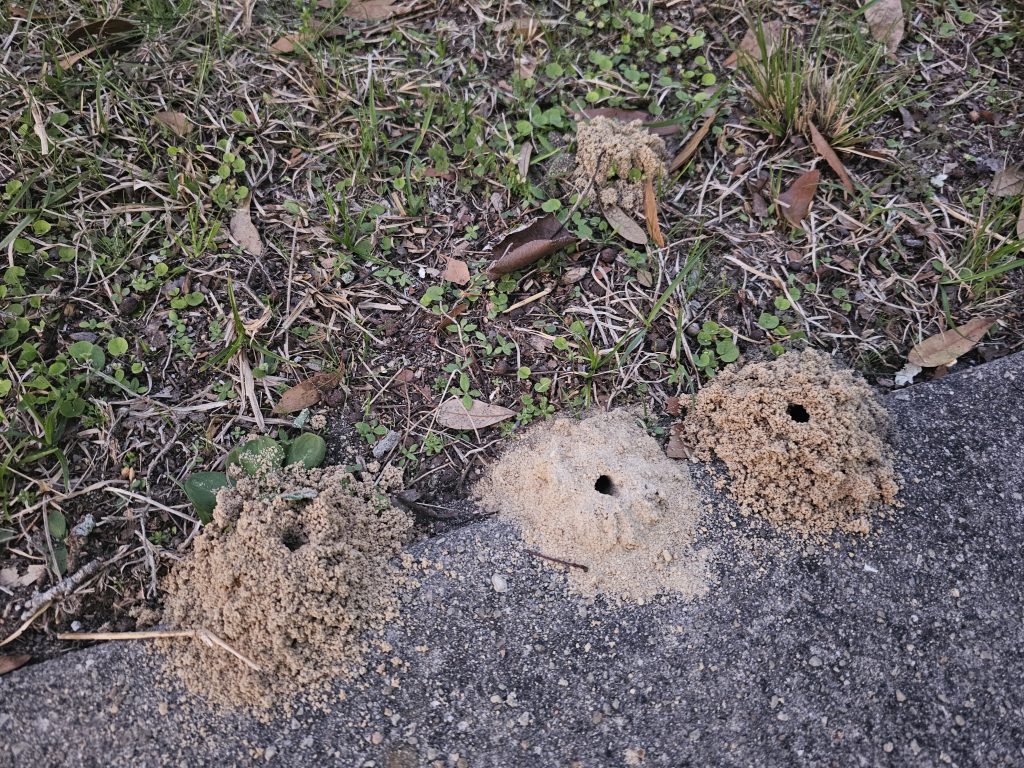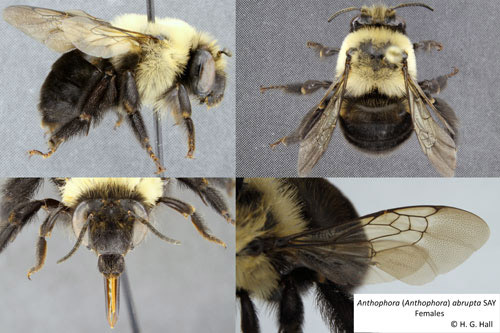Every spring, a certain type of pollinator is busy in the yards and landscapes of our area. It may be alarming to see small piles of soil mounded up amidst carefully tended grass, but there is no need for concern. In fact, quite the opposite! The creatures making those mounds are bees, but they’re not the type that want to sting you. Instead, they’re harmless, solitary pollinators who just want a safe place to lay their eggs.
It’s easy to confuse a bee digging in the lawn or landscape for a yellowjacket and become alarmed. Yellowjackets are very different; they form hives underground consisting of hundreds or even thousands of individual hornets. Miner bees, on the other hand, each dig their own small burrow. Each miner bee is looking for the same sort of place to build a little hidey hole, so many individuals might be attracted to an area with prime real estate, so to speak. This can lead to large numbers of mounds in close proximity to one another, but again, there is no reason to be alarmed.
Each female bee will dig a vertical tunnel up to a foot and a half deep, then make side chambers lined with waterproof material. She stocks each chamber with pollen and nectar, then lays her eggs. Larvae remain in the ground until the following spring. When they emerge as adults, they start the whole process over again.
It is important to understand and protect pollinators such as the miner bee, because they all provide a valuable service to the environment. Pollinators ensure that all the plants around us can reproduce, by carrying genetic material from one flower to another. You can help these little messengers in their task by learning about their habits and making a little room for them in your landscape. When you see these small mounds of soil in your yard, don’t worry! The bees will do their job and the next rain will likely wash away the soil.
Consider attracting other pollinators as well! Plant flowers that attract native pollinators, or leave an area of your landscape “wild”. Let dead plant stalks remain over the winter as nesting sites for pollinators, or try letting a patch of native wildflowers escape mowing for some time in the spring.
For more information, there are plenty of publications out there:
Attracting Native Bees to Your Landscape
…or contact your local Extension office for questions and more information!
- The Eastern Lubber Grasshopper - June 5, 2025
- Grass is Growing; Time for Mowing - April 30, 2025
- Variegation, Viruses, and You - June 27, 2024


